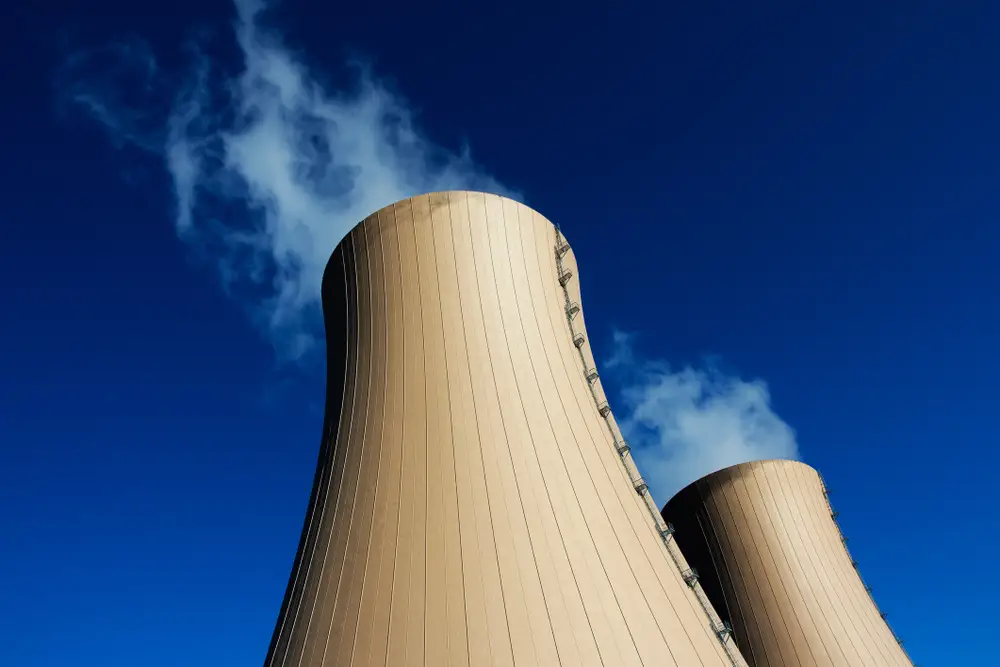Wall Street warms to nuclear power as banks including Goldman Sachs back drive to triple global output by 2050

Nuclear’s share of global electricity production fell to its lowest level since the 1980s last year.
Big Tech is getting excited about nuclear power — and now Wall Street wants a piece of the action.
14 of the world’s largest financial institutions, including US giants Goldman Sachs, Morgan Stanley, and Bank of America, announced on Monday they would throw their support behind an effort to triple the world’s nuclear energy capacity by 2050.
The banks, which also include Citi, Barclays and BNP Paribas have not said what steps they will take to help achieve this goal.
However, their involvement could be crucial in helping meet the emissions target laid out in last year’s COP28 climate conference and revive the nuclear energy sector.
The announcement, held at the Rockefeller Center during New York’s Climate Week event, saw the financial institutions express support for growing nuclear power generation and expanding the broader nuclear industry.
James Schaefer of Guggenheim Securities said in a press release: “New nuclear power is both clean and safe, and more importantly proven. It is essential that we accelerate the progression of planned projects into plants on the ground given the huge demand coming down the line for data centers and AI technologies. This will require nuclear companies, plant owners, data center and technology companies, together with banks and financial institutions to collaborate closely.”
The 25 nations endorsing the Declaration to Triple Nuclear Energy include the US, Canada, France, Japan, Korea, Sweden, Ukraine, United Arab Emirates and the UK.
Once considered the future of clean energy, nuclear power has declined in popularity in recent decades due to governments’ reluctance to back expensive infrastructure projects, concerns about its environmental impact, and other factors such as competition from cheap natural gas in the US.
Declining output
Nuclear accounted for a quarter of Germany’s electricity production until 2011, but a change in government policy meant all its plants were shut down by last year.
Nuclear’s share of global electricity production dropped to its lowest level since the 1980s last year, per the World Nuclear Industry Status Report.
That might soon change, and it’s not just Wall Street getting more interested in nuclear power. Big Tech is also increasingly throwing its support behind the technology, as companies seek to power AI systems and data centers while cutting back their carbon emissions.
Microsoft struck a deal last week to reopen one reactor at the Three Mile Island nuclear plant, which remains best-known for a partial meltdown in 1979.
The tech giant has agreed to buy energy generated by the plant for the next two decades, having invested heavily in AI through its partnership with ChatGPT-maker OpenAI.
Oracle CEO Larry Ellison told investors earlier this month that the energy demand of advanced AI is so “crazy” that his company is building a data center powered by three small nuclear reactors.
“We’ve found the location and the power place, they’ve already got building permits for three nuclear reactors,” he said on Oracle’s first-quarter earnings call.
“These are the small modular nuclear reactors to power the data center. This is how crazy it’s getting. This is what’s going on.”
Rolls-Royce is one of the leading contenders with its small modular reactor designs and has secured development funding of more than £200m from the British government.
Meanwhile, TerraPower, a company cofounded by Bill Gates, is planning a new nuclear power plant in Wyoming.
Goldman Sachs, Morgan Stanley, Bank of America, Barclays and BNP Paribas, did not immediately respond to requests for comment from B-17, sent outside normal working hours. Citi declined to comment.






